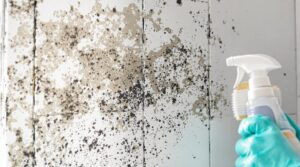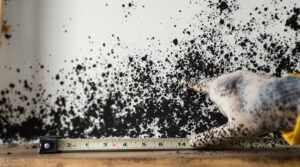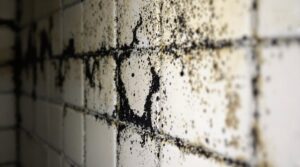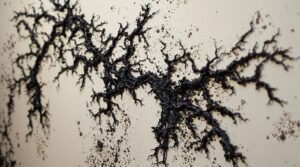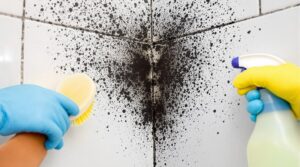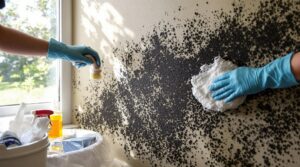Mold toxicity manifests through ten distinct warning signs: respiratory issues including coughing and wheezing, chronic fatigue, cognitive dysfunction (brain fog), unexplained skin rashes, persistent headaches, recurring sinus infections, digestive inflammation, mood changes, sleep disturbances, and musculoskeletal pain. These symptoms often intensify in water-damaged environments and may improve upon leaving affected areas. Understanding these indicators enables early detection and proper intervention through environmental assessment, specialized testing, and professional remediation strategies.
Key Takeaways
- Persistent respiratory issues including coughing, wheezing, and shortness of breath, especially when inside water-damaged buildings.
- Chronic fatigue and weakness due to inflammatory responses and compromised mitochondrial function.
- Cognitive difficulties like brain fog, memory problems, and difficulty concentrating due to mycotoxin-induced inflammation.
- Recurring sinus infections and nasal congestion, with 96% of chronic sinusitis cases showing fungal presence.
- Digestive problems including chronic nausea, bloating, and unexplained weight loss due to gut inflammation.
The Silent Enemy in Your Home: Understanding Mold Exposure
Living with mold exposure often manifests through subtle yet persistent symptoms that can easily be mistaken for common ailments.
Initial indicators of mold growth include respiratory issues such as runny nose, sneezing, and coughing, accompanied by eye irritation and throat discomfort. Skin reactions may also develop, presenting as rashes or general irritation.
The health effects of mold exposure become more apparent when individuals notice their symptoms diminishing upon leaving the affected environment.
A distinctive musty odor often serves as a key identifier of potential mold problems within indoor spaces.
The presence of recurring headaches and breathing difficulties further suggests possible mold toxicity, particularly when these symptoms intensify during time spent at home.
For individuals with pre-existing conditions such as asthma or compromised immune systems, the impact of mold exposure can be particularly severe, potentially leading to more serious respiratory complications if left unaddressed.
Prompt action is essential since mold can develop within 24 to 48 hours after water exposure in your home. If mold is allowed to grow unchecked, it can lead to significant health risks and costly damage to your property. To prevent this, it’s crucial to monitor and maintain acceptable mold levels in crawl spaces, where moisture often accumulates. Regular inspections and remediation efforts can help ensure that your home remains safe and healthy for you and your family.
Respiratory Distress: When Every Breath Becomes a Challenge
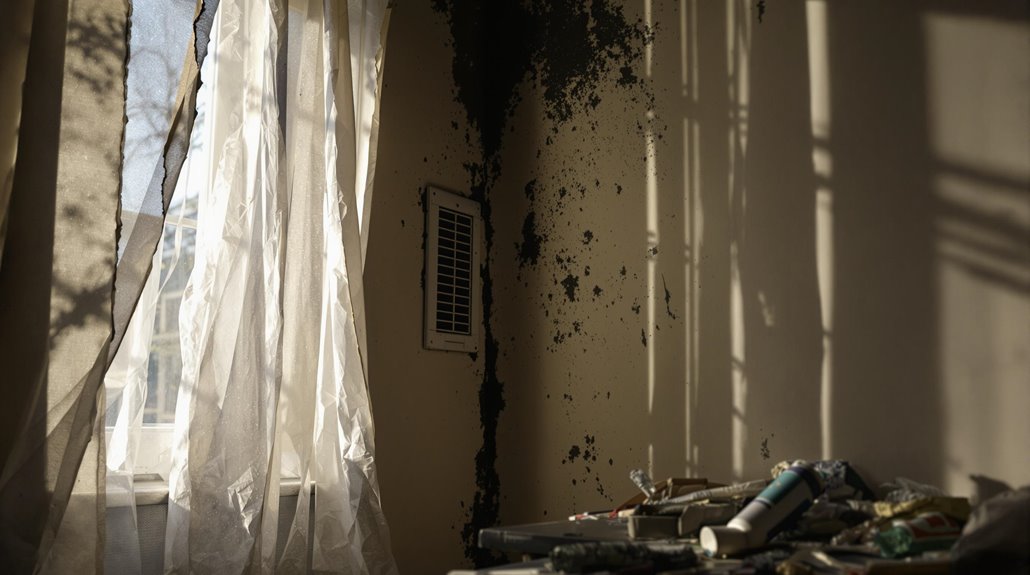
When mold spores infiltrate indoor environments, they can trigger a cascade of respiratory symptoms that substantially impact breathing function. Common mold symptoms include persistent coughing, wheezing, and pronounced shortness of breath, often accompanied by nasal congestion and rhinorrhea. These respiratory issues frequently manifest alongside postnasal drip and irritation of the nose, eyes, and throat.
For individuals with pre-existing asthma, mold exposure presents particularly severe risks, potentially triggering acute asthma attacks characterized by intense chest tightness and labored breathing.
In some cases, exposure can lead to more serious conditions such as allergic bronchopulmonary aspergillosis or hypersensitivity pneumonitis, where lung inflammation becomes a vital concern. The severity of these respiratory issues often correlates with environmental factors, including indoor humidity levels and ventilation quality.
Understanding these symptoms is essential, as prolonged exposure in poorly ventilated or water-damaged buildings can exacerbate respiratory distress and lead to chronic health complications.
Brain Fog and Memory Issues: The Cognitive Impact

Inside the neural pathways of individuals exposed to toxic mold, a complex cascade of cognitive disruptions unfolds, manifesting primarily as brain fog and memory impairment. The presence of mycotoxins triggers inflammatory responses within the hippocampus, leading to diminished neurogenesis and compromised cognitive function.
This neurological interference presents through multiple symptoms: difficulty concentrating, impaired memory retention, and reduced attention span. The impact extends beyond immediate cognitive challenges, as mycotoxins can alter neurotransmitter production, affecting both dopamine and serotonin levels.
While memory retention strategies and cognitive exercises may offer temporary relief, the underlying inflammation continues to affect neural processes until the exposure is addressed.
Those with compromised immune systems face heightened vulnerability to these cognitive effects, potentially experiencing more severe manifestations including disorientation, confusion, and coordination difficulties.
The progression of symptoms often correlates with duration of exposure, emphasizing the critical importance of early detection and intervention.
Unexplained Skin Reactions and Rashes
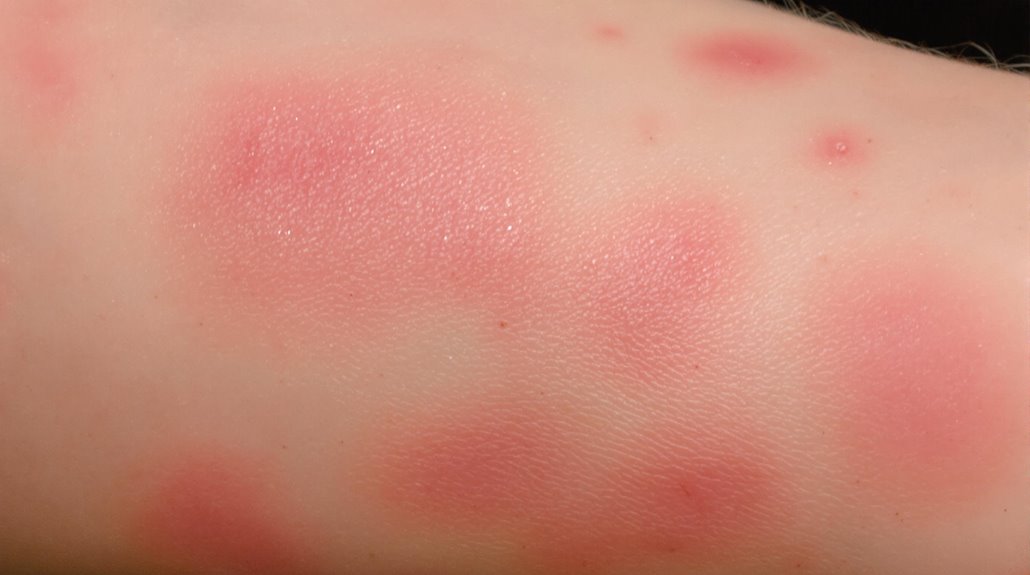
Mold exposure frequently manifests through distinct skin reactions, including red patches, hives, and contact dermatitis that can occur anywhere on the body.
These dermatological symptoms typically present as itchy, dry patches with possible scaling and bumpy texture changes in affected areas.
The skin's response to mold toxicity may also include widespread irritation and discoloration, often accompanied by persistent itching that can lead to secondary complications if left untreated.
Red Patches and Hives
Skin reactions associated with mold toxicity often manifest as distinctive red patches and unexplained hives across the body. These dermatological responses typically present with characteristic symptoms, including scaly, dry patches accompanied by persistent itching and notable tenderness in affected areas.
As common allergy triggers, mold spores can initiate inflammatory responses that result in raised, bumpy textures and visible skin discoloration ranging from pink to deep red hues.
Understanding skin rash causes related to mold exposure requires careful examination of environmental factors and patient history. Healthcare providers often utilize specific diagnostic methods, including blood tests and skin prick assessments, to confirm mold sensitivity.
The presentation of these symptoms, particularly when coupled with respiratory issues, serves as a critical indicator of potential mold toxicity requiring prompt medical evaluation and treatment.
Contact Dermatitis Symptoms
When contact dermatitis develops from mold exposure, it typically manifests through distinct dermatological patterns that include scaling, redness, and localized inflammation. This skin irritation can appear in multiple areas simultaneously, presenting as dry, scaly patches with a characteristic bumpy texture.
While these mold symptoms may resemble other allergic reactions, proper diagnosis often requires confirmation of mold sensitivity through blood tests or skin prick testing.
Treatment approaches range from over-the-counter antihistamines and cortisone creams to prescription medications in severe cases. For mild manifestations, natural remedies such as aloe vera and oatmeal baths may provide relief.
Prevention focuses on environmental control and mold avoidance, as prolonged exposure can lead to chronic symptoms. Professional medical evaluation becomes essential when symptoms persist or worsen despite initial treatment efforts.
Itching and Dry Patches
Beyond typical contact dermatitis, individuals exposed to toxic mold may experience unexplained itching and dry patches across various body areas.
These mold symptoms can manifest as scaly, raw patches of skin that become increasingly sensitive to touch. The immune system's response to mold spores often triggers inflammation, leading to persistent skin reactions that may prove difficult to diagnose without professional consultation.
Common manifestations include:
- Small raised bumps that may develop fluid-filled blisters and exhibit brown or pink discoloration
- Dry, flaky patches that resist conventional skin treatment methods and moisturizers
- Widespread itching that intensifies in environments with high mold concentration
These symptoms often accompany other allergic reactions such as respiratory issues, making it essential to take into account environmental factors when evaluating persistent skin conditions.
Chronic Fatigue and Weakness

The debilitating effects of mold toxicity frequently manifest as chronic fatigue and weakness, stemming from multiple physiological mechanisms. Mold exposure triggers inflammatory responses throughout the body while damaging mitochondria, the cellular powerhouses responsible for energy production.
Additionally, mycotoxins can compromise respiratory function and break down myelin sheaths that protect nerve fibers, further contributing to systemic fatigue.
This profound exhaustion typically accompanies a constellation of symptoms, including muscle and joint pain, cognitive difficulties, and mood disturbances. Sleep disruptions and heightened sensory sensitivities often compound the fatigue.
Research indicates a significant connection between mold exposure and the reactivation of Epstein-Barr virus, particularly in individuals who develop Chronic Inflammatory Response Syndrome (CIRS). The prevalence of these symptoms is particularly higher in people exposed to water-damaged buildings, where mycotoxin-producing molds flourish.
Diagnostic confirmation often requires environmental testing and specialized urine analysis to detect mycotoxin presence.
Digestive System Disruptions

Mold toxicity can severely disrupt the gut microbiome, causing an imbalance between beneficial and harmful bacteria that compromises digestive function.
The mycotoxins produced by mold can damage the intestinal barrier, leading to increased intestinal permeability known as "leaky gut syndrome," which allows harmful substances to enter the bloodstream.
This ongoing assault on the digestive system triggers chronic inflammatory responses throughout the gastrointestinal tract, resulting in various digestive symptoms and potential long-term health complications.
Gut Flora Under Attack
When mycotoxins enter the digestive system, they initiate a cascade of destructive effects on gut flora and intestinal function. These toxins disrupt the delicate balance of microorganisms by depleting beneficial bacteria while simultaneously promoting the growth of harmful pathogens like Staphylococcus and E. coli. This disruption leads to immune dysfunction and increased inflammation throughout the digestive tract.
- Mycotoxins damage intestinal villi, compromising nutrient absorption and increasing the risk of malnutrition.
- The altered gut bacteria composition makes the digestive system more susceptible to infections and parasitic overgrowth.
- Helper T cell populations decrease, further weakening the gut's immune defenses and ability to maintain homeostasis.
These effects are particularly severe in individuals with pre-existing digestive conditions or those exposed to additional environmental stressors.
Leaky Gut Development
Beyond disrupting gut flora, mycotoxins trigger a cascade of events that leads to intestinal hyperpermeability, commonly known as leaky gut syndrome.
These toxins systematically compromise digestive health through multiple mechanisms: they suppress tight junction proteins essential for maintaining gut barrier integrity, generate harmful reactive oxygen species, and create oxidative stress that damages intestinal cells.
The impact of mycotoxin effects on gut permeability is particularly severe in individuals with pre-existing microbial balance issues.
Environmental factors, including inflammatory diets and exposure to industrial toxins, can amplify these effects.
The resulting damage creates a cycle where compromised intestinal repair mechanisms further deteriorate barrier function.
This deterioration necessitates targeted detoxification strategies to address both the underlying mold exposure and its health implications for the digestive system.
Chronic Digestive Inflammation
Chronic digestive inflammation manifests through a complex array of gastrointestinal symptoms in individuals exposed to mycotoxins. The disruption of intestinal mucosa by mold toxins leads to chronic nausea, persistent constipation, and compromised nutrient absorption.
This inflammatory response can trigger significant changes in the gut microbiome and epithelial tissue, potentially resulting in small intestine fungal overgrowth (SIFO).
Key manifestations of mold-induced digestive inflammation include:
- Severe bloating accompanied by unexplained weight loss
- Frequent abdominal pain with alternating bowel habits
- Disrupted appetite patterns leading to nutritional deficiencies
The inflammatory cascade triggered by mycotoxins can extend beyond the digestive system, potentially exacerbating autoimmune conditions and contributing to systemic inflammation.
This complex interaction emphasizes the importance of thorough diagnostic approaches when evaluating digestive symptoms.
Persistent Headaches and Migraines

Among the most prevalent symptoms of mold toxicity, persistent headaches and migraines can considerably impact daily functioning through multiple physiological mechanisms.
When individuals encounter mold spores, their bodies initiate immune responses that trigger inflammation and release cytokines, establishing potent headache triggers. The production of mycotoxins by certain mold species further compounds these effects by increasing oxidative stress and disrupting neurological function.
The manifestation of mold-related headaches often accompanies other symptoms, including cognitive difficulties, sinus problems, and heightened sensitivity to environmental stimuli. Individuals with pre-existing conditions such as allergies or autoimmune disorders face elevated risks.
Treatment options typically involve a multi-faceted approach, beginning with identifying and eliminating the source of mold exposure. Medical interventions may include anti-inflammatory medications and strategies to manage allergic responses.
Blood tests can confirm mold exposure, while environmental testing helps locate contamination sources, enabling targeted remediation efforts.
Mood Changes and Emotional Instability

Exposure to toxic mold can trigger significant changes in mental health, manifesting as depression, anxiety, and compromised emotional regulation.
Cognitive impairments associated with mold toxicity often present as difficulties with mental focus, memory recall, and problem-solving capabilities.
The neurological impact of mycotoxins can create systemic inflammation and neurotransmitter disruption, leading to persistent mood instability and decreased mental clarity.
Depression and Anxiety Signs
Many individuals experiencing mold toxicity first notice significant changes in their emotional well-being and mental state. Research indicates that mycotoxins from mold exposure directly interfere with neurotransmitter function and trigger systemic inflammation, leading to pronounced mental health impacts.
These neurological disruptions can manifest as severe depression and heightened anxiety states.
Key indicators of mold-related anxiety and depression include:
- Persistent feelings of dread or panic attacks, particularly when exposed to environments with potential mold presence
- Cognitive difficulties including memory problems and word recall issues, often accompanied by feelings of emotional numbness
- Sleep disturbances that compound emotional symptoms, creating a cycle of increasing psychological distress
The presence of these symptoms, especially when combined with other physical manifestations, warrants immediate investigation for potential mold exposure effects.
Mental Focus Problems
Significant disruptions in cognitive function and emotional regulation represent hallmark indicators of mold toxicity exposure. These manifestations include pronounced difficulty with concentration, memory recall deficits, and impaired decision-making capabilities. The underlying mechanisms involve mycotoxins that directly interfere with neurological processes and trigger inflammatory responses in brain tissue.
Affected individuals often experience marked emotional instability, characterized by unpredictable mood fluctuations and heightened irritability.
While cognitive clarity strategies and focus improvement techniques may offer temporary relief, the persistence of exposure can lead to chronic inflammation and potential long-term neurological complications.
Research indicates connections between prolonged mold exposure and the development of serious cognitive disorders, emphasizing the critical importance of early recognition and intervention in cases of suspected mold toxicity.
Recurring Sinus Infections and Allergies

Recurrent sinus infections and allergic reactions serve as prominent indicators of potential mold toxicity, with research showing that 96% of chronic sinusitis cases involve fungal presence.
The development of mold allergies often manifests through persistent nasal congestion, sinus inflammation, and compromised immune responses. These symptoms can escalate into chronic conditions when exposure continues unchecked.
Medical professionals identify several key manifestations of mold-related sinus issues:
- Persistent nasal cavity swelling accompanied by diminished olfactory function
- Post-nasal drip leading to chronic cough and respiratory discomfort
- Recurring headaches and facial pressure due to fungal colonization
The severity of symptoms often correlates with individual genetic predisposition and immune system strength.
Diagnostic procedures typically involve multiple approaches, including skin tests, blood analysis, and endoscopic examinations.
Treatment success depends on both addressing the immediate fungal infection through antifungal therapies and eliminating environmental mold sources through proper remediation and ventilation improvements.
Early Detection and Taking Action
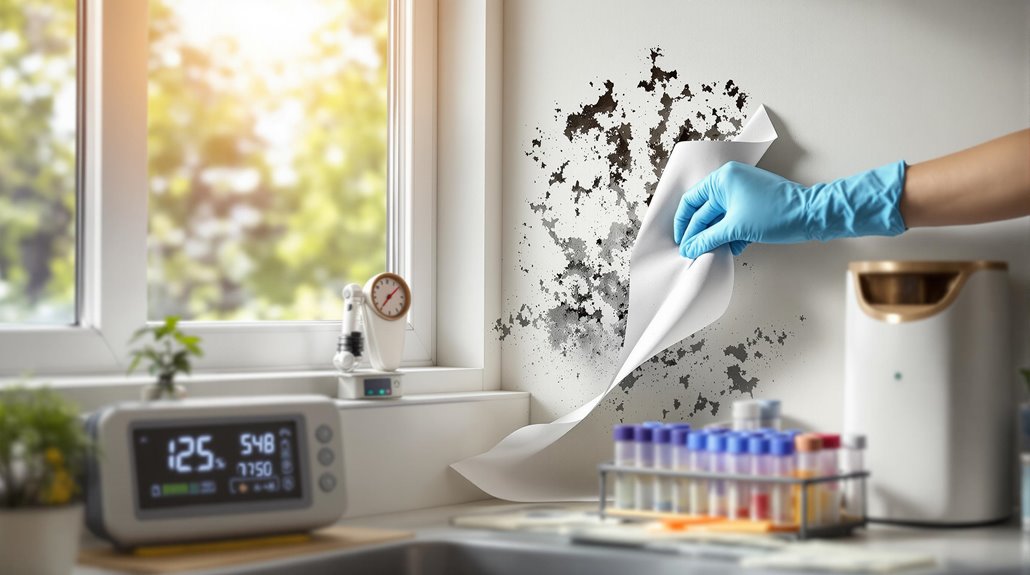
The early detection of mold toxicity requires a detailed approach combining environmental assessment with advanced diagnostic tools. While conventional methods like skin prick tests and environmental sampling provide baseline data, they often fail to quantify individual exposure levels accurately.
Advanced diagnostic tools, particularly the Mycotoxins Panel, offer more precise measurements of toxin concentrations in the body.
Early intervention begins with recognizing common indicators such as persistent fatigue, allergic reactions, and digestive issues. These symptoms, though sometimes overlapping with other conditions, warrant proactive measures including exhaustive laboratory testing and professional medical evaluation.
The implementation of preventive strategies focuses on controlling environmental factors through proper ventilation, humidity management, and prompt remediation of water damage.
Regular monitoring and assessment using both conventional and advanced diagnostic tools guarantee accurate detection and guide appropriate treatment protocols, ultimately minimizing potential health risks associated with mold exposure.
The Benefits Of Consulting A Public Adjuster
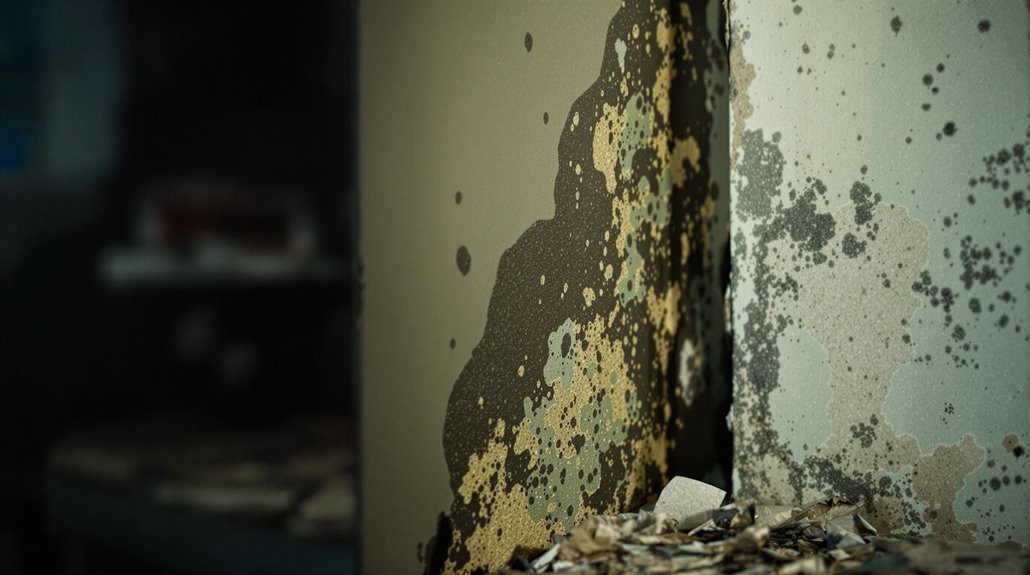
Public adjusters provide essential expertise in steering complex insurance claims related to mold toxicity, offering objective assessments of damage and thorough documentation of affected areas.
Their professional representation streamlines the claims process by managing all communications with insurance companies while ensuring compliance with local regulations and policy requirements.
Studies indicate that claims handled by public adjusters typically result in higher settlements, as these licensed professionals identify additional damages and negotiate effectively on behalf of policyholders.
Expertise In Insurance Claims
Steering complex insurance claims related to mold toxicity requires specialized expertise, making the consultation of a public adjuster invaluable for affected homeowners.
These professionals possess thorough knowledge of insurance policy interpretation and understand the intricacies of mold claim challenges, including exclusion clauses and coverage limitations.
Public adjusters facilitate the claims process through:
- Detailed analysis of policy documents to identify all applicable coverage and benefits
- Accurate documentation of mold damage, including detailed assessments and supporting evidence
- Strategic negotiation with insurance carriers, utilizing knowledge of state regulations and industry standards
Their methodical approach guarantees proper claim presentation while managing complex paperwork requirements.
This expertise often results in more favorable settlements for policyholders, particularly in cases involving extensive mold remediation and associated health impacts.
Objective Damage Assessment
Securing an objective damage assessment through a public adjuster provides homeowners with essential documentation and expert analysis of mold-related property damage. These professionals conduct thorough inspections to identify both visible and hidden contamination while maintaining detailed records of their findings.
| Assessment Component | Key Benefits |
|---|---|
| Visual Inspection | Identifies visible mold growth patterns |
| Moisture Testing | Detects potential hidden growth areas |
| Air Quality Analysis | Measures spore concentration levels |
| Surface Sampling | Determines type and extent of contamination |
| Documentation Review | Evaluates insurance policy coverage |
Public adjusters utilize specialized equipment and technical expertise to perform extensive mold assessments. Their unbiased evaluation guarantees accurate damage documentation, preventing underestimation of remediation costs by insurance companies. This objective approach helps secure fair settlements that adequately cover necessary repairs and restoration, while maintaining compliance with industry standards for mold remediation protocols.
Streamlined Claim Process
Most homeowners find substantial value in consulting a public adjuster for mold-related insurance claims, as these professionals streamline the complex filing process while maximizing potential settlements.
Public adjusters manage vital documentation, coordinate with mold remediation strategies, and navigate insurance policy implications to guarantee extensive coverage.
- Reviews and interprets policy details to identify all available coverage options for mold-related damages
- Coordinates with remediation specialists and other experts to document extent of contamination
- Handles all communication with insurance carriers while maintaining detailed records of damage assessments
These licensed professionals serve as advocates throughout the claims process, utilizing their expertise to expedite settlements and guarantee proper compensation for mold-related damages.
Their thorough understanding of industry practices and policy requirements helps prevent claim denials while reducing stress for affected homeowners.
Higher Claim Payouts & Settlements
Statistical evidence demonstrates that engaging a public adjuster substantially increases insurance claim settlements for mold-related damages.
Studies indicate that homeowners working with public adjusters receive payouts up to five times higher than those who handle claims independently.
This significant difference stems from public adjusters' expertise in insurance negotiation and exhaustive mold documentation processes.
Their in-depth knowledge of policy language and coverage parameters enables them to interpret complex terms and maximize entitled compensation.
Through thorough damage assessments, detailed evidence collection, and strategic negotiations, public adjusters build robust cases that support higher settlements.
Their professional understanding of mold-specific challenges, including health implications and remediation requirements, strengthens their ability to advocate effectively for appropriate compensation levels.
About The Public Claims Adjusters Network (PCAN)

The Public Claims Adjusters Network (PCAN) operates as an extensive resource hub for property owners facing mold-related insurance claims and other property damage issues. The organization maintains stringent adjuster qualifications, requiring all professionals to be licensed, bonded, and equipped with industry-leading assessment tools. Throughout the claims process, PCAN provides thorough support services without requiring upfront fees from clients.
Key operational aspects of PCAN include:
- Deployment of specialized teams for catastrophic events and emergency mitigation services
- Integration of advanced technology for precise damage assessment and documentation
- Maintenance of a dedicated call center providing continuous communication and support
PCAN's network of adjusters possesses specific expertise in mold-related claims, offering property owners access to professionals who understand the complexities of mold damage assessment and remediation. Their services encompass detailed property loss evaluation, thorough claim documentation, and strategic negotiation with insurance providers to secure appropriate settlements.
Frequently Asked Questions
How Long Does It Take for Mold Toxicity Symptoms to Appear?
Mold exposure symptom onset varies considerably, ranging from immediate reactions to delays of several months. Factors influencing timing include exposure level, individual sensitivity, mold type, and environmental conditions.
Can Pets Show Symptoms of Mold Exposure Before Humans Do?
Pets commonly exhibit mold exposure symptoms before humans due to their increased indoor exposure, smaller size, and distinct pet behavior patterns. They serve as valuable indicators for early detection of environmental mold issues.
Do Air Purifiers Effectively Remove Mold Spores From Indoor Environments?
High-quality air purifiers with HEPA filtration effectively capture 99.97% of airborne mold spores. While essential for mold remediation, purifiers must be combined with addressing moisture sources for complete effectiveness.
Is Mold Toxicity Covered by Standard Health Insurance Policies?
An estimated 70% of insurers exclude mold-related claims. Standard health insurance policies typically provide limited or no coverage for mold toxicity medical expenses unless directly linked to a covered condition.
Can Mold Toxicity Symptoms Persist After Moving to a Mold-Free Environment?
Mold toxicity symptoms can persist after relocating, with symptom duration varying from weeks to months. The recovery process depends on exposure length, individual sensitivity, and successful elimination of contaminated items.
Final Thoughts
Recognizing mold toxicity's warning signs enables swift intervention against this household hazard. Through methodical assessment of symptoms – from respiratory distress to cognitive impairments – individuals can identify potential exposure before severe health complications develop. Like a medieval castle's early warning system, these biological indicators serve as vital alerts. Professional consultation with public adjusters and remediation experts remains essential for thorough resolution of mold-related property damage and associated health risks.
For homeowners experiencing mold-related property damage covered under their homeowners insurance policy, insurance industry professionals and legal experts strongly advise consulting a qualified state-licensed public adjuster. Public adjusters work exclusively for policyholders, not insurance companies, serving as dedicated advocates throughout the claims process. These state-licensed professionals help navigate complex insurance policies, identify hidden damages often unknown to policyholders, document losses comprehensively, and negotiate with insurance companies to ensure fair settlements while protecting policyholder rights.
By engaging a public adjuster, policyholders can maximize their claim payouts, expedite the claims process, and reduce the stress of dealing with insurance companies. This allows homeowners to focus on recovery while ensuring their mold-related damage claims are properly handled. Policyholders seeking expert assistance can request a no-obligation free consultation with a Public Claims Adjusters Network (PCAN) member public adjuster to discuss their property damage or loss claims.
References
- https://www.homeinspectionsmiamifl.com/warning-signs-that-indicate-you-have-toxic-mold-illness/
- https://www.niehs.nih.gov/sites/default/files/health/materials/mold_508.pdf
- https://portlandclinicofnaturalhealth.com/10-warning-signs-of-mold-toxicity-what-you-need-to-know/
- https://www.eds.clinic/articles/10-warning-signs-of-mold-toxicity-and-the-connection-to-mcas
- https://www.epa.gov/mold/can-mold-cause-health-problems
- https://puremaintenancenebraska.com/symptoms-of-mold-exposure/
- https://www.theenvironmentalblog.org/2024/10/10-warning-signs-of-mold-toxicity/
- https://www.parsleyhealth.com/blog/mold-toxicity-symptoms/
- https://nvwaterandfire.com/10-warning-signs-of-mold-toxicity-explained/
- https://www.healthline.com/health/mold-in-house

